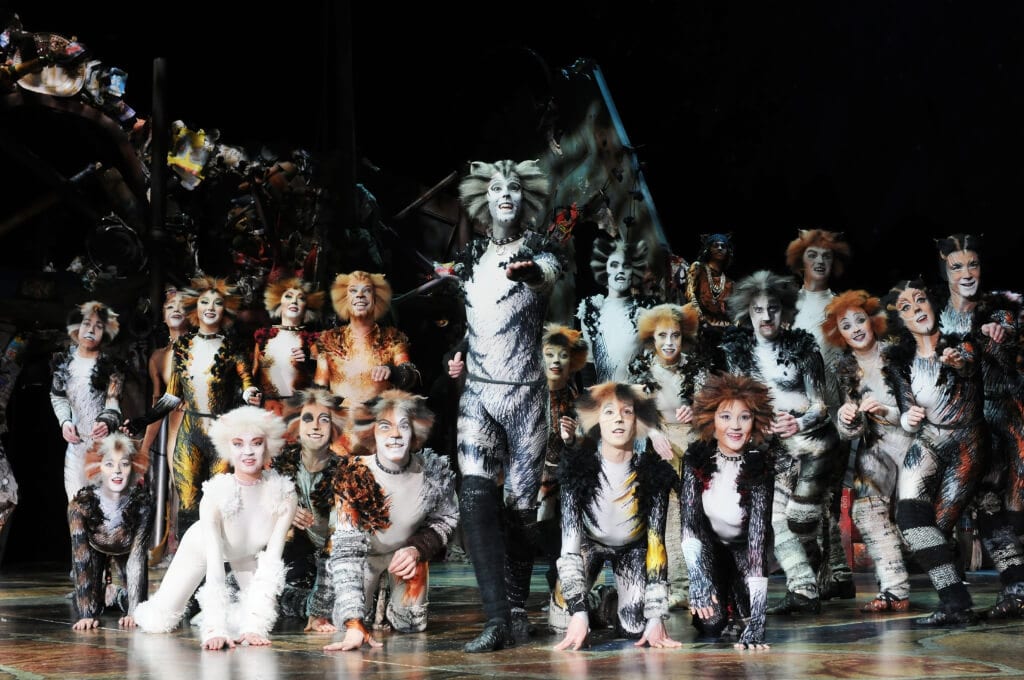The revamp of Cats that took place for its run at the Palladium and for the current tour of the show is sort of an equivalent to someone cleaning the grime off a favourite old painting: the colours come up fresh as ever and the details that had got lost or blurred return to their old clarity. This is a very fine production indeed. Cats may now be a kind of period piece; but it has a charm that is quite irresistible. The set is a good evocation of the original in London all those years ago but also, I thought, a bit better thought out to allow for all the movement; the cat make-up and costumes are still startling and apt; and the new cast is one of the best examples of a committed ensemble working in the UK today. Each of the solo turns is as good as I have ever seen them and the Cats Orchestra is simply brilliant.
This is a fine experience of a concept musical brought into vivid and completely convincing life. The core of the performance is held together particularly by the agile, slightly sinister, febrile Munkustrap of Matt Krzan whose voice and acting are as striking and resonant as his astonishingly accomplished dancing. Marianne Benedict makes the part of Grizabella, a mangy old former beauty of a cat fallen on hard times, her very own and she managed to bring out all the nuance one would wish performing the song “Memory”.
Full credit must go to Trevor Nunn for the balance he brings to restaging the show. The sad subtext of the story line is fully declared throughout, as is the cheeky energy of the concept; the T S Eliot (and Trevor Nunn) words are delivered with total clarity; and Gillian Lynne’s ageless, powerful choreography is as captivating and vital as ever.
As for the music, I am tired of people attacking Andrew Lloyd Weber for not being Richard Rodgers, Frederick Loewe or Stephen Sondheim. For heaven’s sake: accept the “given”. The score for Cats has some memorable and hummable moments, one really good hit song, recurring themes that are catchy and suit the action. This is a concept show full of anthropomorphised characterizations (not just cats either: there is the awful battle of the Pekes and the Pollicle Dogs) and Cats makes its impact partly because the score mostly serves the same function as does a good film score – underlining, highlighting, providing mood and rhythm and only sometimes, only when required, rising to lyrical standout moments. Apart from that, by now one has to admit that Andrew Lloyd Webber has provided a lot of pleasure for a lot of audiences and a lot of jobs for a lot of very talented music theatre singers, dancers and actors who might otherwise be out of work.
So let us now praise Cats for all that it is, stop worrying about what it isn’t; and go enjoy this very faithful and even moving touring version. This show is a classic. It truly has nine lives and I suspect that we still have a few more to go.

